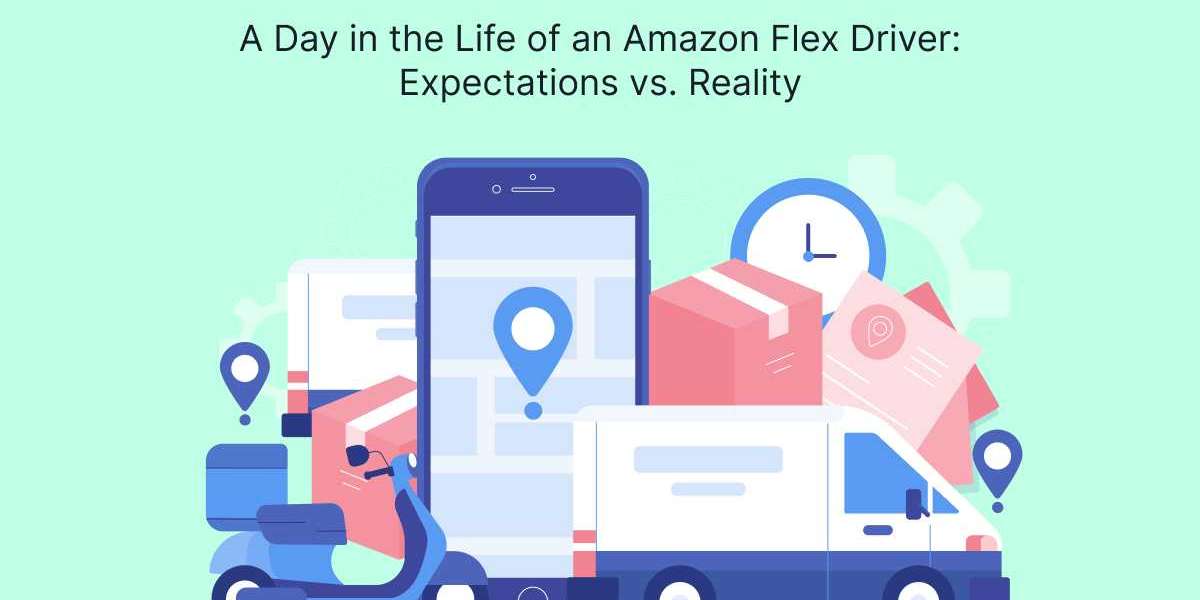Amazon Flex has become a popular option for people looking to earn money through flexible, gig-based work. Like ride-hailing apps or food delivery services, Amazon Flex drivers use their vehicles to deliver packages to customers, working as independent contractors. The idea is appealing: a job that offers freedom, the ability to set your own hours, and the opportunity to earn decent pay. But what does a day in the life of an Amazon Flex driver truly look like? How does the reality stack up against expectations? Let’s take a closer look.
Expectation: Full Control Over Your Schedule
One of the main reasons people are drawn to Amazon Flex is the flexibility it promises. The idea of picking shifts that suit your lifestyle sounds ideal for parents, students, or anyone who needs a side hustle. You imagine having the freedom to choose when you want to work without being tied down to a fixed schedule.
Reality: While it’s true that Amazon Flex offers some flexibility, it's not always as straightforward as it seems. The app releases delivery blocks, but these shifts are often quickly grabbed by other drivers. It can feel competitive, especially in densely populated areas. Some drivers report refreshing the app constantly, hoping to snatch up blocks. On busier days, like around the holidays or Prime Day, there might be more shifts available, but during slower periods, you might struggle to find work. So, while you do have the option to choose your hours, getting enough shifts isn’t always guaranteed.
Expectation: Quick and Easy Money
Another major appeal of Amazon Flex is the potential for a solid hourly wage. Amazon advertises that drivers can make anywhere from $18 to $25 per hour, making it seem like a great way to earn money fast. You imagine a typical day being as simple as picking up a block, making deliveries, and heading home with cash in hand.
Reality: While the base pay is decent, a lot depends on external factors. For instance, the area you deliver in can significantly impact how much you actually earn. Some drivers in urban areas can quickly get from one delivery point to another, but if you're delivering in a suburban or rural area, the time spent driving between stops can cut into your potential earnings. There’s also wear and tear on your vehicle, fuel costs, and maintenance to consider. These expenses are not covered by Amazon, meaning the true hourly rate can be lower than expected once those are factored in.
Additionally, unexpected delays—such as difficulty finding the delivery location, heavy traffic, or struggling with large packages—can also eat into your time and earnings. What may start as a 3-hour block could easily turn into 4 or 5 hours of work, without extra pay.
Expectation: Minimal Interaction and Independence
For introverts or those who prefer working alone, Amazon Flex seems ideal. You imagine your day as a solo operation, where you simply pick up packages, deliver them, and call it a day. No bosses hovering over you, no coworkers, and minimal customer interaction.
Reality: While most of the work is indeed solo, there are moments that require interaction. You’ll need to communicate with Amazon support if you face any issues, like delivering to the wrong address or if a customer isn’t available to receive their package. Moreover, in some neighborhoods, drivers report feeling uneasy when delivering at odd hours or in unfamiliar areas. While Amazon has measures in place for driver safety, it’s not a completely isolated experience.
And independence? Yes, you’re on your own, but Amazon has specific guidelines for deliveries. You’re expected to follow a route planned by the app, and there's pressure to meet delivery times, which can sometimes feel more structured than advertised.
Expectation: Easy Navigation and Smooth Deliveries
With today’s navigation technology, you might expect deliveries to go smoothly. The app provides maps, and your job is simply to follow the GPS and drop off packages. Easy, right?
Reality: In most cases, navigation works well, but drivers often run into hiccups. The app might direct you to an incorrect address, or you could find yourself stuck in areas with poor cell service, unable to receive the next set of instructions. Apartment buildings, gated communities, or places with strict access policies can be particularly tricky to navigate. Sometimes, you’ll need to use your judgment or spend extra time tracking down the exact delivery point.
Expectation: Stress-Free, Low-Pressure Work
You might expect Amazon Flex to be a stress-free gig where you simply deliver packages, without the pressure of dealing with clients directly or navigating workplace politics.
Reality: While the work itself may seem straightforward, it can come with unexpected pressures. Delivering within the allotted time frame can sometimes feel rushed, especially if the route is more challenging than expected. There’s also the issue of "porch pirates" — you could be held accountable if a package you delivered goes missing. Though this is rare, it adds a layer of stress to what might otherwise be a low-pressure job.
Conclusion
At first glance, being an Amazon driver app offers many perks, particularly the promise of flexibility, independence, and a good hourly wage. However, the reality of the job includes challenges like securing enough shifts, managing expenses, navigating complex delivery routes, and dealing with time pressures. For many, Amazon Flex can still be a great way to earn extra income, but it’s essential to go in with a clear understanding of both the benefits and the potential downsides. Like any gig economy role, it's about managing expectations and being prepared for the unpredictable.



